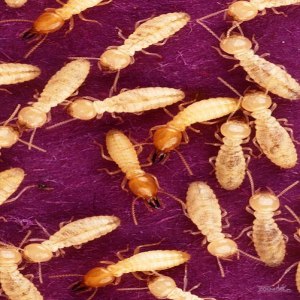 Termites are called “white ants” because of their pale coloring and physical similarities to ants. However, ants have a narrow waist that segments their bodies, termites do not. Also ant antennae are segmented, while termite’s antennae are straight. Termites, like ants, have winged reproductive forms. The king and queen termites are large, over one inch in length, whereas the worker and soldier termites are smaller.
Termites are called “white ants” because of their pale coloring and physical similarities to ants. However, ants have a narrow waist that segments their bodies, termites do not. Also ant antennae are segmented, while termite’s antennae are straight. Termites, like ants, have winged reproductive forms. The king and queen termites are large, over one inch in length, whereas the worker and soldier termites are smaller.
Location: Animals Formerly at Zoo
Share:
Range
Most termite species are found in the tropics, but several dozen species are found in the United States, except Alaska. Due to their soft cuticles, termites do not inhabit cool or cold habitats. There are 3 ecological groups of termites: dampwood, drywood, and subterranean.
Habitat
Depending on the species, termite nests are found underground, in dead trees and stumps, in the tops of live trees, and in wooden structures. Tallest termite mound was found in the Congo at 42 feet. Ants are among the biggest predators of termites.
Conservation Status
Primary Threats
Gestation
Life cycle begins with an egg, but the process is an incomplete metamorphosis. Egg, nymph, and adult. Sometimes an egg can have 4 molts and then nymph 3 molts. Nymphs first molt into workers, then some workers molt to soldiers or alates.
Litter
The queen only lays 10-20 eggs in the very early stages of the colony, but lays as many as 1,000 a day when the colony is several years old.
Behavior
Termites are likely to have originated during the Jurassic time. Termites are blind, communication occurs through chemical, mechanical, and pheromonal cues. They have a caste system. The lowest level is the worker who is sexually and developmentally immature. Workers take part in building the nest, getting food, and caring for young.
Reproduction
Alates swarm in warm weather and form pairs. They lose their wings and become kings and queens of new colonies. Termite queens have been known to live between 30 to 50 years.
Wild Diet
Termites obtain nutrients from wood and plant materials, but they can’t digest their own food. They have symbiotic protozoa and bacteria in their guts to break down the tough plant fibers.
Zoo Diet

